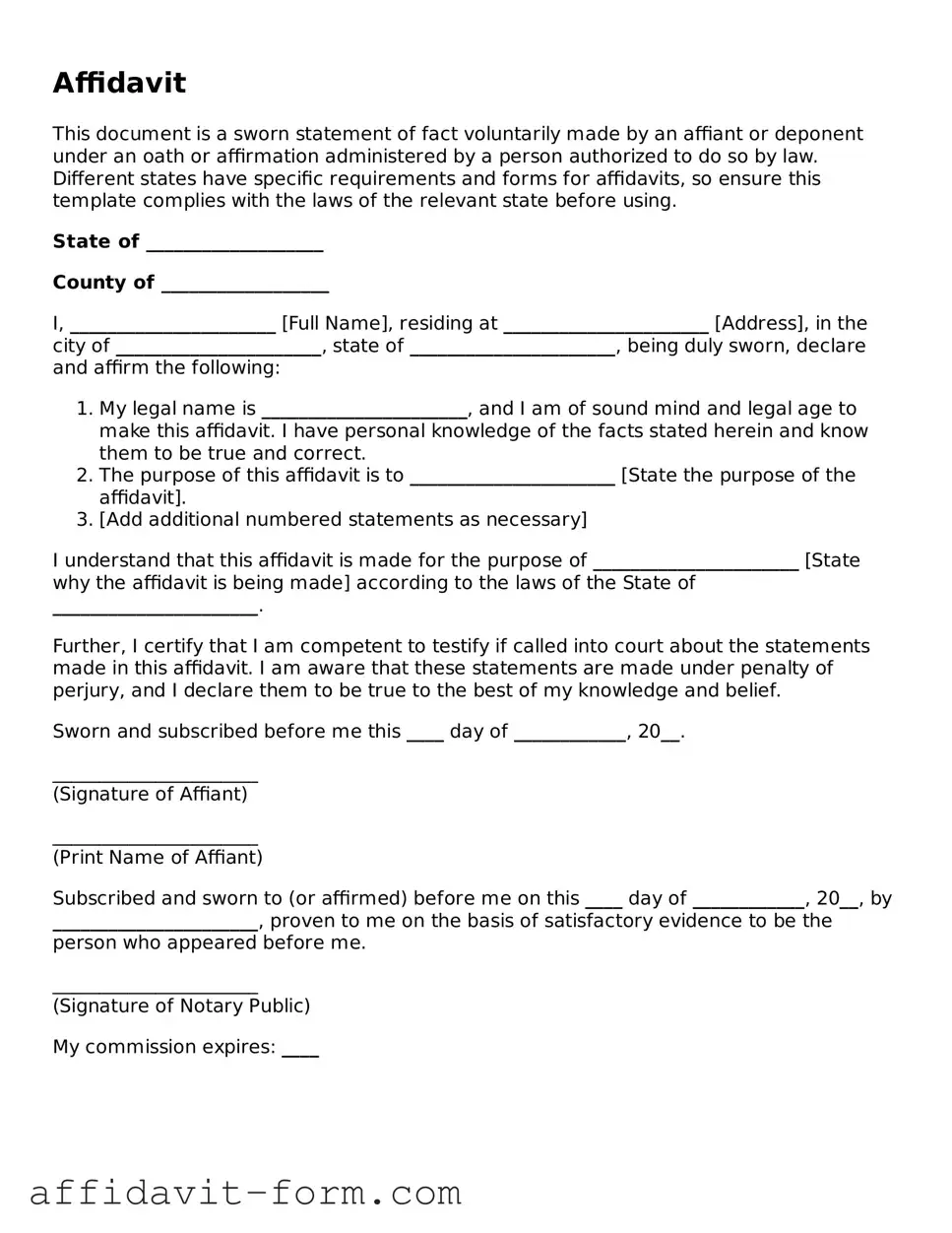Affidavit
This document is a sworn statement of fact voluntarily made by an affiant or deponent under an oath or affirmation administered by a person authorized to do so by law. Different states have specific requirements and forms for affidavits, so ensure this template complies with the laws of the relevant state before using.
State of ___________________
County of __________________
I, ______________________ [Full Name], residing at ______________________ [Address], in the city of ______________________, state of ______________________, being duly sworn, declare and affirm the following:
- My legal name is ______________________, and I am of sound mind and legal age to make this affidavit. I have personal knowledge of the facts stated herein and know them to be true and correct.
- The purpose of this affidavit is to ______________________ [State the purpose of the affidavit].
- [Add additional numbered statements as necessary]
I understand that this affidavit is made for the purpose of ______________________ [State why the affidavit is being made] according to the laws of the State of ______________________.
Further, I certify that I am competent to testify if called into court about the statements made in this affidavit. I am aware that these statements are made under penalty of perjury, and I declare them to be true to the best of my knowledge and belief.
Sworn and subscribed before me this ____ day of ____________, 20__.
______________________
(Signature of Affiant)
______________________
(Print Name of Affiant)
Subscribed and sworn to (or affirmed) before me on this ____ day of ____________, 20__, by ______________________, proven to me on the basis of satisfactory evidence to be the person who appeared before me.
______________________
(Signature of Notary Public)
My commission expires: ____
